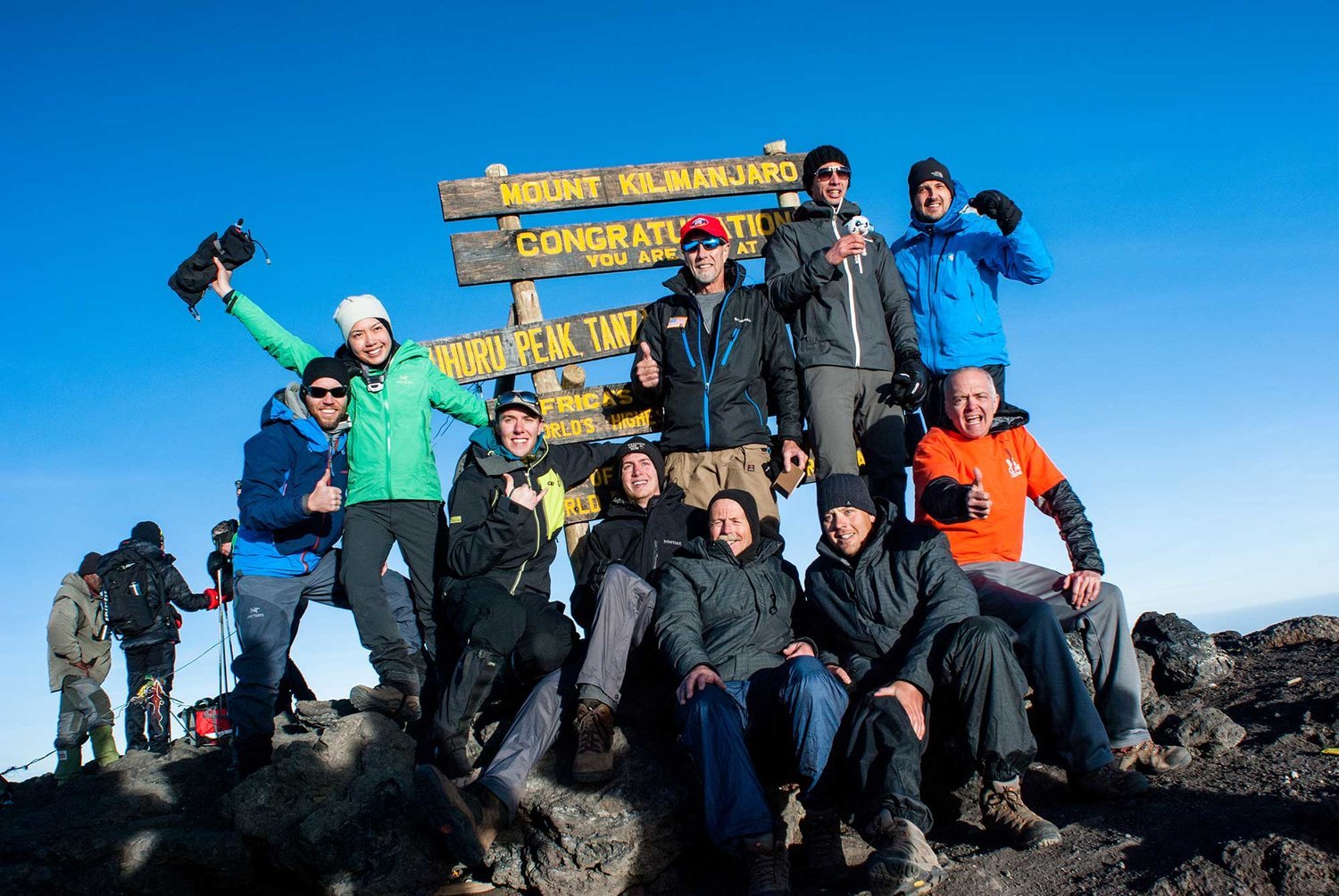What to pack for Kilimanjaro is one of the most important things to know before your climb. Standing at 5,895 meters (19,341 feet), Africa’s highest peak demands the right preparation and gear. The weather changes from tropical rainforest at the base to freezing cold at the summit. Packing smart helps you stay comfortable, safe, and ready for every challenge on your way to the top.
Essential Clothing Layers
Kilimanjaro’s weather shifts dramatically as you move through its ecological zones. Layering is key:
- Base Layer (Moisture-Wicking): Lightweight thermal tops and bottoms to keep you dry.
- Mid Layer (Insulation): Fleece jackets or down sweaters to trap warmth.
- Outer Layer (Shell): Waterproof and windproof jacket and pants (Gore-Tex or similar).
- Summit Layer: A down jacket or parka for extreme cold at the top.
Footwear
- Hiking Boots: Sturdy, waterproof, and broken-in boots with good ankle support.
- Camp Shoes: Lightweight trainers or sandals for evenings at camp.
- Socks: Multiple pairs of wool or synthetic socks; bring liners to reduce blisters.
Head and Hand Gear
- Warm Hat/Beanie: Essential for cold nights and summit day.
- Sun Hat & Sunglasses: Protects against equatorial sun and snow glare.
- Gloves: Lightweight liner gloves for general use, plus insulated gloves or mittens for summit day.
Sleeping Gear
- Sleeping Bag: Rated to at least –10°C (14°F), preferably down-filled for warmth and lightness.
- Sleeping Mat: Usually provided by outfitters, but confirm before your trip.
Daypack Essentials
You’ll carry a small daypack while porters carry larger loads. Pack:
- Refillable water bottles or hydration bladder (minimum 3 liters).
- Snacks (energy bars, nuts, dried fruit).
- Headlamp with extra batteries.
- Rain cover for your backpack.
- Camera or smartphone for photos.
Health and Personal Items
- Medications: Personal prescriptions, altitude sickness prevention (consult your doctor), pain relievers, and rehydration salts.
- First Aid Kit: Blister plasters, antiseptic, bandages, and sunscreen (SPF 30+).
- Toiletries: Biodegradable soap, toothbrush, wet wipes, and hand sanitizer.
- Trekking Poles: Highly recommended for steep ascents and descents.
Documents and Money
- Passport (with Tanzanian visa if required).
- Travel insurance (must include high-altitude trekking coverage).
- Cash (USD is widely accepted for tips and extras).
Packing Tips
- Use Dry Bags: Separate clothing layers and keep them dry in case of rain.
- Weight Limits: Porters usually carry up to 15 kg (33 lbs) per climber — pack smart.
- Test Your Gear: Wear your boots and layers on practice hikes before the trip.
Final Thoughts
Packing for Kilimanjaro is about preparation and balance. Bring everything necessary for warmth, hydration, and safety — but avoid overpacking. With the right gear, you’ll not only be comfortable but also give yourself the best chance of standing on the “Roof of Africa.”
